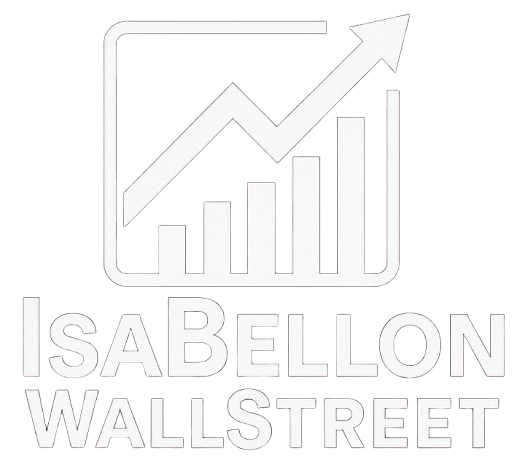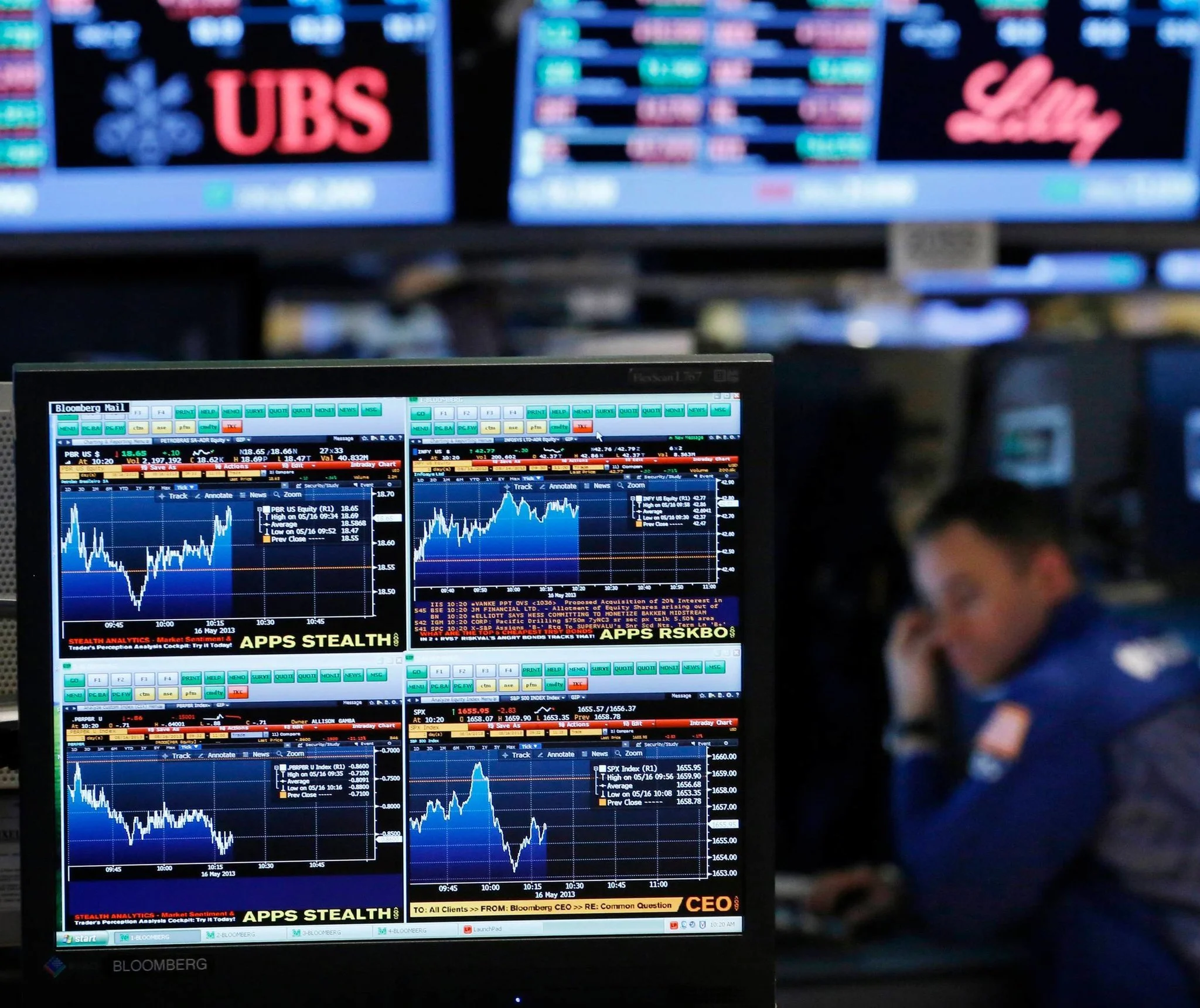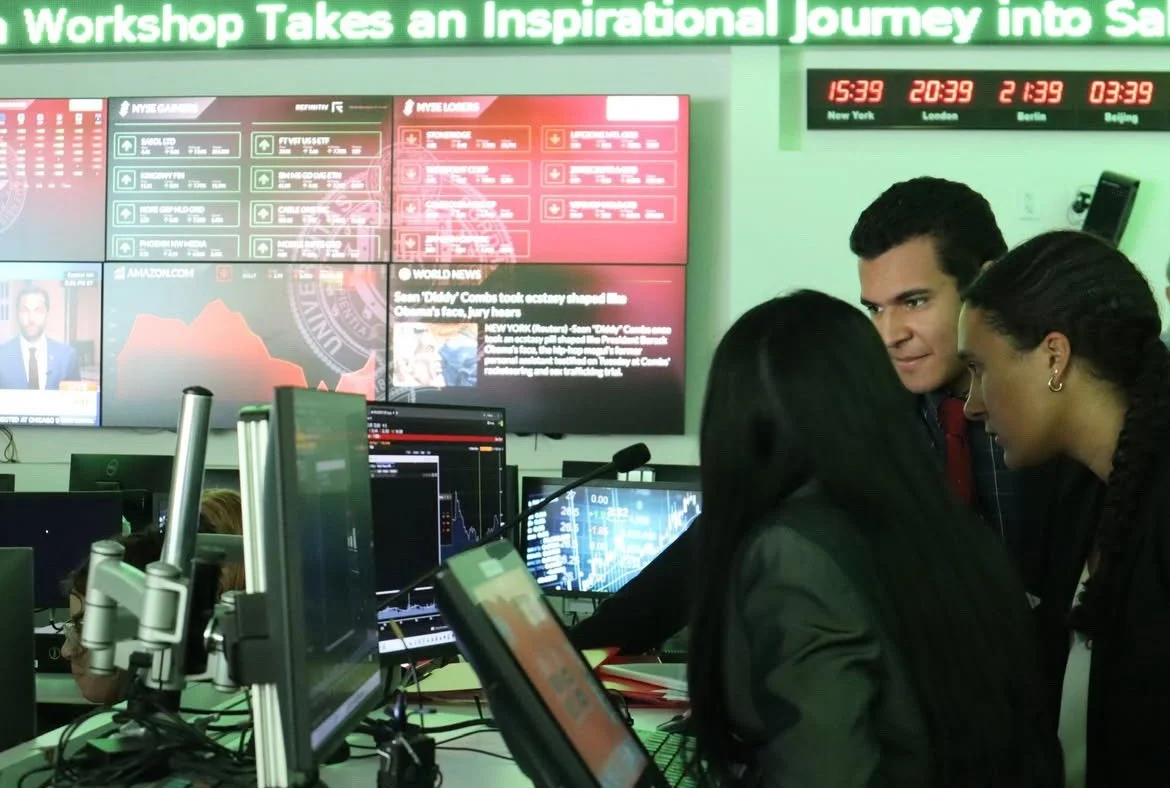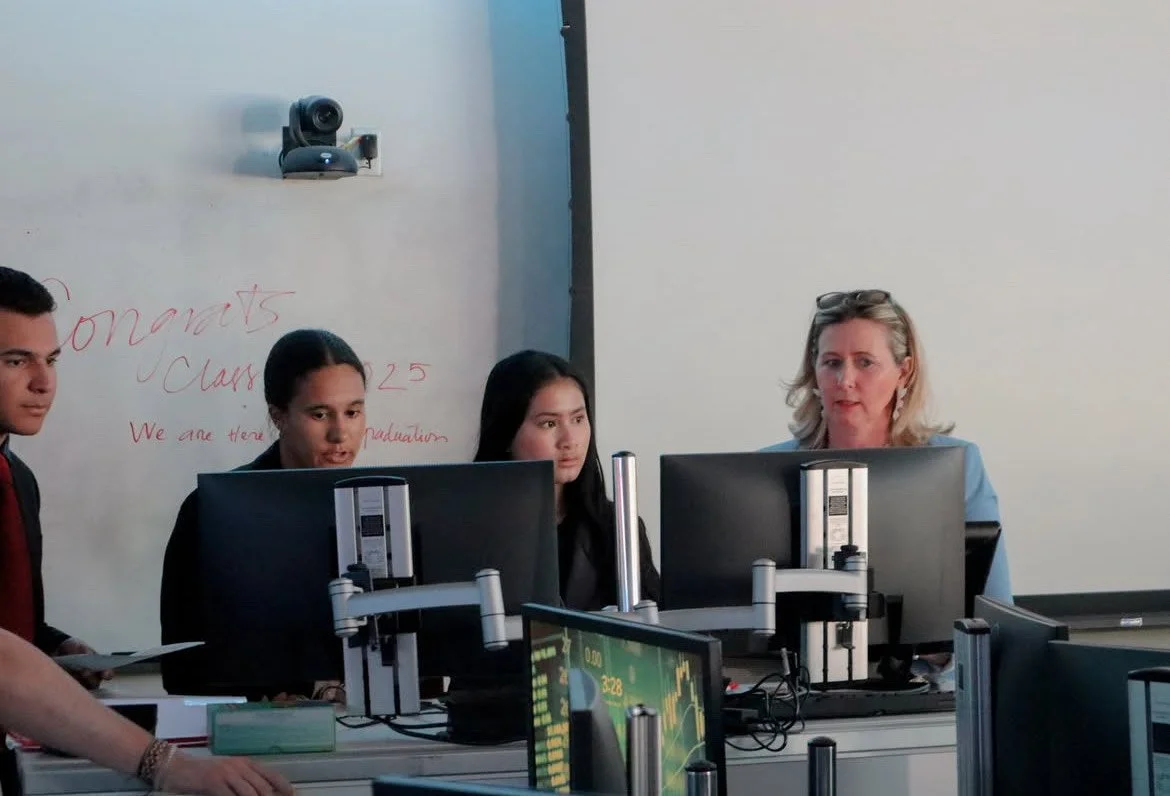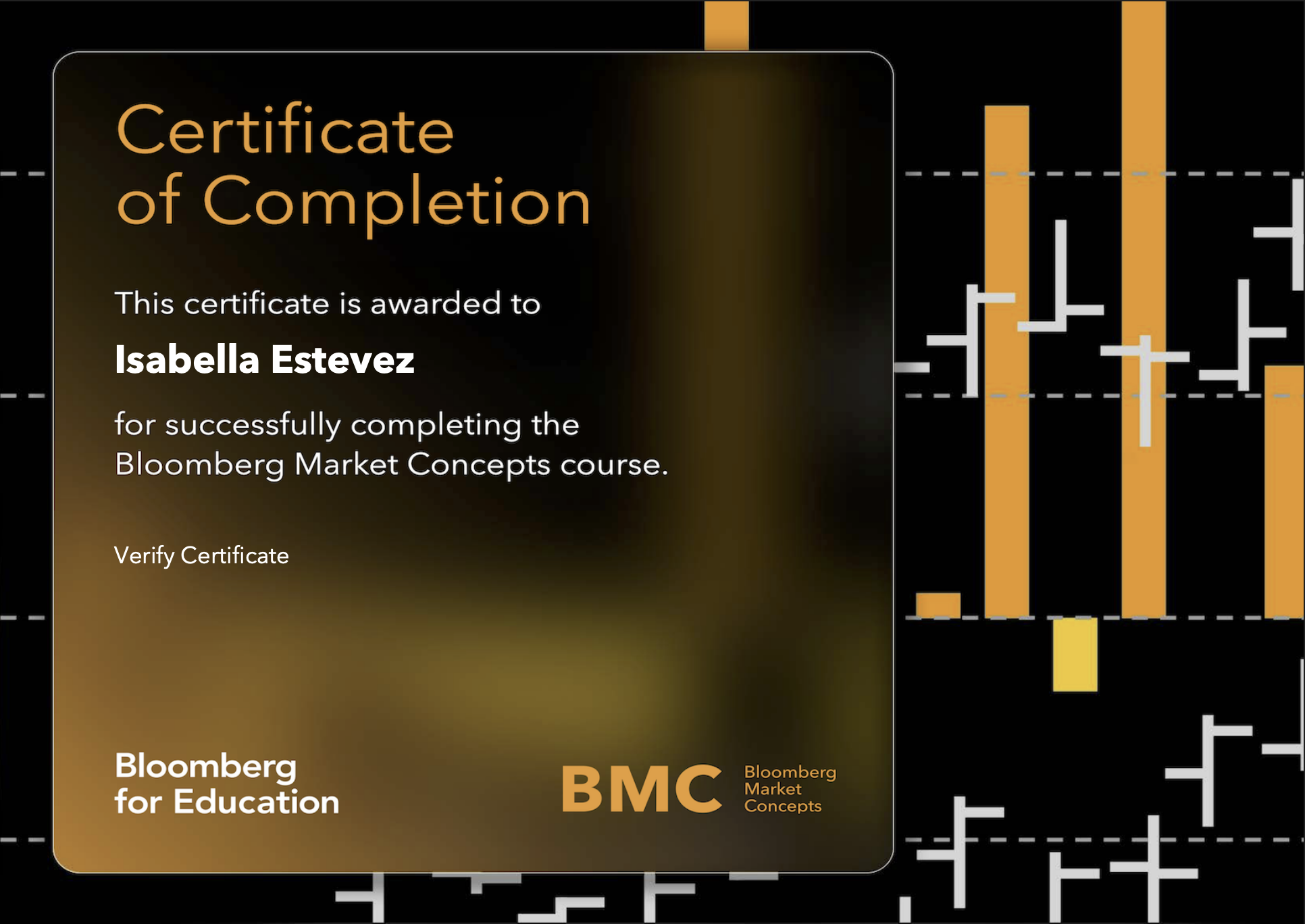BLOOMBERG
Harnessing Real-Time Data and Tools to Make Informed Decisions and Navigate the World of Finance Like a Pro
The Bloomberg Terminal is one of the most powerful tools used by professionals in finance, business, and government to make smart, informed decisions. But access to this tool and the knowledge to use it has often been limited to elite institutions and wealthy circles.
At IsaBellonWallStreet, we believe financial knowledge should belong to everyone. That’s why we’re breaking down what the Bloomberg Terminal is, how it works, and how learning about tools like this can open doors to careers, confidence, and control over your financial future.
You don’t need to be on Wall Street to start thinking like a financial leader. We’re here to help you understand the language, tools, and opportunities that others take for granted.
Through her high school, IsaBellonWallStreet founder Isabella Estevez has had the rare privilege of exploring the Bloomberg Terminal firsthand. Isabella has not only learned to navigate its advanced features but has also earned her Bloomberg Market Concepts (BMC) certification, deepening her understanding of financial markets, economic indicators, and investment strategies.
Below, she shares background on Bloomberg and the Terminal, her personal experience, and key insights into their impact, value, and how these tools empower informed financial decisions.
WHAT IS BLOOMBERG?
Bloomberg is a company that gives people important information about money and the economy. It helps investors, businesses, and news outlets understand what's going on in the financial world. Bloomberg makes a special computer system (called the Bloomberg Terminal) that shows real-time stock prices, news, charts, and data. It also has a TV channel, website, and app with financial news. Basically, if you want to know what’s happening with money, markets, or companies, Bloomberg is one of the best places to look.
WHAT IS A BLOOMBERG TERMINAL AND WHY IS IT IMPORTANT?
A Bloomberg Terminal is a powerful computer system that gives real-time financial data, news, and tools to help people make smart decisions about money. Banks, investors, and businesses use it to track stock prices, read breaking news, study markets, and even message other users around the world. It’s important because it puts all the key financial information in one place, updates instantly, and helps users stay ahead in fast-moving markets. Without it, professionals would waste time jumping between sources and might miss out on important opportunities.
ISABELLA’S EXPERIENCE WITH BLOOMBERG
My journey with Bloomberg began when I enrolled in an introductory financial literacy and Bloomberg course at my high school. Independently, I earned the Bloomberg Market Concepts (BMC) certification. As I learned to navigate the Bloomberg Terminal and interpret real-time data, I realized how powerful financial knowledge could be.
This experience left me wanting to learn more and inspired me to co-found the Advanced Bloomberg Program & Koala Portfolio, a program for students who earned their Bloomberg Market Concepts Certification, who excelled in the introductory class, and want to learn more. In this advanced course, we go beyond basic concepts to explore real-world investing. We use Bloomberg Terminal functions to analyze companies, track market performance, and build an investment portfolio. I had the opportunity to help organize and plan a field trip in collaboration with a local Catholic school to visit Fordham University’s trading floor and Bloomberg terminals, giving many students their first hands-on experience with these powerful financial tools.
Every decision we make in our schools portfolio is backed by data from the Bloomberg Terminal. Whether we’re comparing financial ratios, studying historical trends, or responding to current events, we apply the same tools that finance professionals use every day. Leading this program has not only strengthened my technical skills, but it’s also shown me the power of informed decision-making and the importance of making financial education more inclusive.
Isabella Estevez at Fordham University utilizing the Bloomberg terminals on their trading floorBLOOMBERG MARKET CONCEPTS CERTIFICATION
The Bloomberg Market Concepts (BMC) certification is a self-paced, online course offered by Bloomberg that introduces learners to the core principles of finance and the global markets. It’s designed for students and professionals who want to build a strong foundation in financial literacy and market analysis.
The course is divided into four main modules:
Economic Indicators – Understanding how reports like GDP and unemployment affect markets
Currencies – Exploring the foreign exchange market and what moves currency values
Fixed Income – Learning how bonds work and how interest rates impact investments
Equities – Studying stocks, company performance, and valuation strategies
While completing the BMC, I gained hands-on experience using Bloomberg Terminal functions to analyze real-time data, track financial trends, and make connections between global news and market behavior. This certification helped prepare me for more advanced finance work and inspired me to help others access these tools and opportunities.
ISABELLA’S MOST USED TERMINAL FUNCTIONS
As I’ve explored the Bloomberg Terminal, I’ve found myself returning to a few key functions again and again. These tools have helped me analyze markets, compare companies, and make informed portfolio decisions just like professionals do:
RV – Relative Valuation
This tool lets me compare a company to its peers based on key financial metrics like P/E ratio, EV/EBITDA, and more. I use it to see if a stock is undervalued or overvalued compared to others in its industry.
TOP – Top News
Keeps me updated on the most important global financial news. I rely on it to understand how current events, earnings reports, or policy changes might impact markets and investment strategies.
DES – Description
Provides a quick but thorough overview of any company—including what it does, its key executives, and where it operates. I often use this to get context on new companies we’re analyzing.
ANR – Analyst Recommendations
Shows what Wall Street analysts are saying about a stock—buy, sell, or hold. I use ANR to see how professionals are rating companies and why, which helps guide my team’s investment discussions.
GP – Graph Pricing
One of my favorites for visualizing historical stock performance, trends, and technical indicators. I use GP to track how stocks in our portfolio are moving over time and to support buy/sell decisions.
These functions have become essential tools in my financial toolkit. Learning to use them has not only improved the quality of our investment decisions, but it’s also given me real insight into how financial professionals think, work, and lead.
